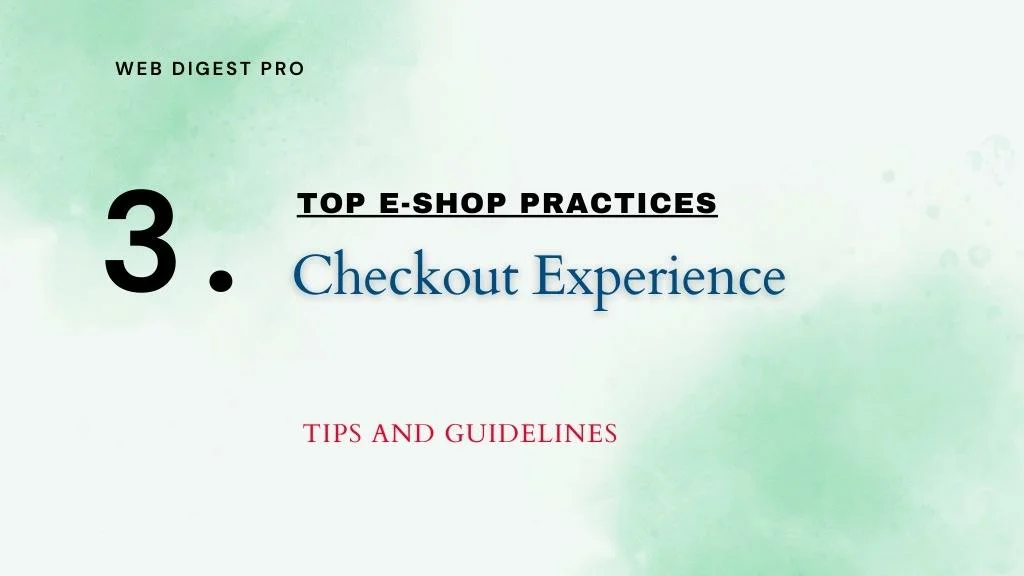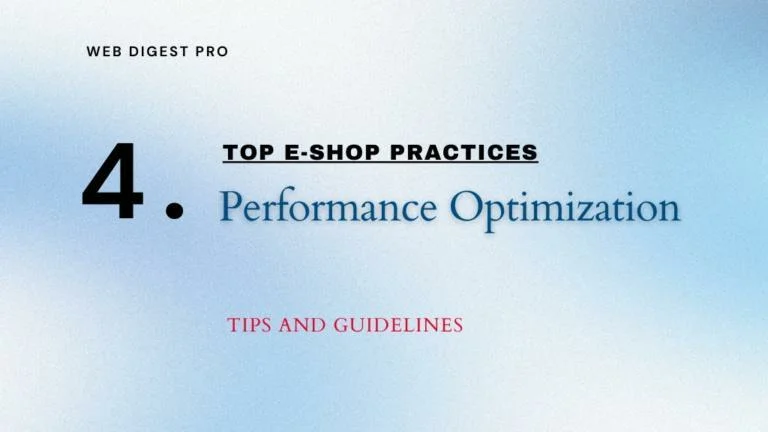Having a smooth checkout process is essential to increasing sales and decreasing abandoned carts. An effective and seamless checkout experience can greatly affect customer happiness and sales success. This article examines important tactics for enhancing the checkout process, such as streamlining the checkout, providing various payment choices, and guaranteeing secure transactions. By putting these practices into action, online stores can improve user experience and increase conversion rates.
The Complete Series of Top E-Shop Practices:
- User-Centric Design
- Personalization
- Checkout Experience
- Performance Optimization
- Customer Support
- Data-Driven Decisions
- Marketing and Promotion
1. Simplified Checkout Process
1.1 Streamlining the Checkout Process
The objective of a checkout procedure is to simplify the process for customers to finish their transactions smoothly. Begin by minimizing the amount of steps needed to complete a transaction. A long and intricate checkout procedure can irritate users and result in abandoned carts. Streamlining the procedure helps users convert with ease, leading to increased conversion rates.
1.2 Offering Guest Checkout Options
The option to enable users to make a purchase without having to sign up removes a typical obstacle to completing a transaction. A lot of clients favor a fast and simple checkout process, and making them sign up can be a disadvantage. By providing a guest checkout choice, you meet the needs of users seeking a simplified process and lessen the likelihood of abandoned carts.
1.3 Providing Clear Progress Indicators
Clear progress indicators are crucial for keeping customers informed throughout the checkout process. Visual elements like progress bars or step markers aid users in realizing how many steps are remaining to finish their purchase. Clear checkout progress indicators help customers feel confident and informed about where they are in the process, leading to increased completion rates.
2. Multiple Payment Options
Credit and debit cards along with digital wallets such as PayPal and Apple Pay must be present. Stripe, along with other platforms provide various payment options and simplify the customer checkout experience. Visitors are more inclined to complete their purchases when they can pay using their desired payment method.
3. Secure Transactions
3.1 Implementing SSL Certificates
Customer data safety is key to building trust and securing transactions. SSL certificates protect data exchanged between the customer’s browser and your online store. This keeps sensitive information like credit card details and personal data secure. Showing SSL certificates and security badges on your website provides customers with confidence in the safety of their data.
3.2 PCI-DSS Standard
E-shops usually don’t handle credit or debit card information directly. If your e-shop processes such information, then consider complying to the Payment Card Industry Data Security Standard (PCI-DSS), which is a requirement. This provides a secure environment for handling transactions.
3.3 Displaying Security Badges
You may consider to display badges from reputable security providers or payment gateways. This helps to build trust and confidence. Security badges serve as a reminder that your e-shop is committed to protecting customer data and adhering to best practices for online security.
Links
Written by Dimitrios S. Sfyris, founder and developer of AspectSoft, a software company specializing in innovative solutions. Follow me on LinkedIn for more insightful articles and updates on cutting-edge technologies.
Subscribe to our newsletter!














+ There are no comments
Add yours